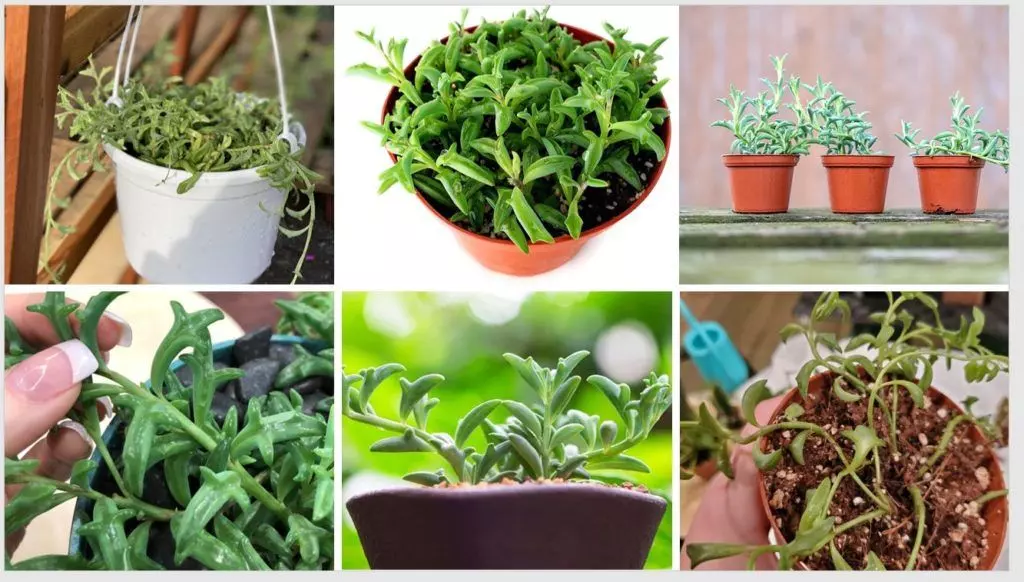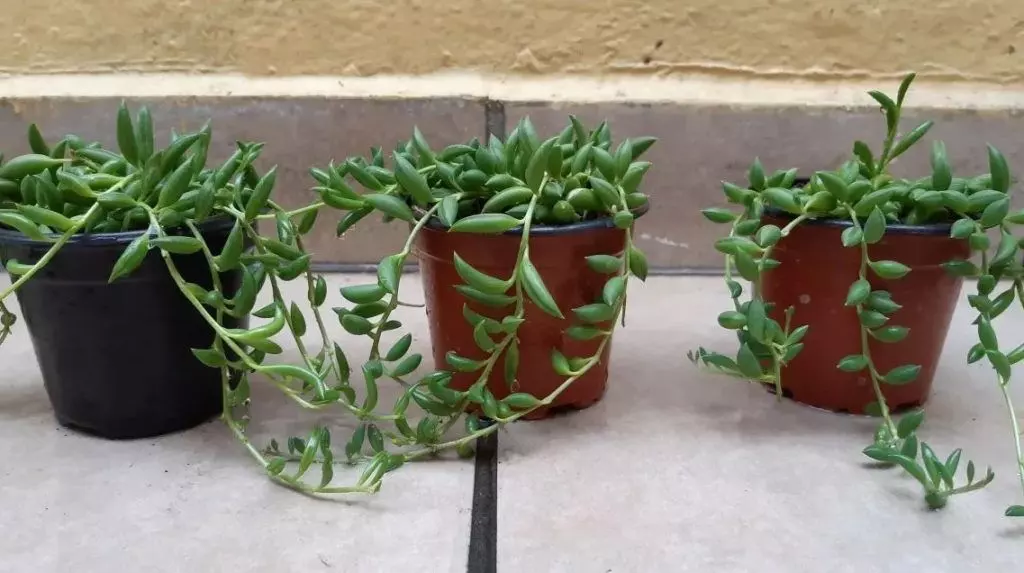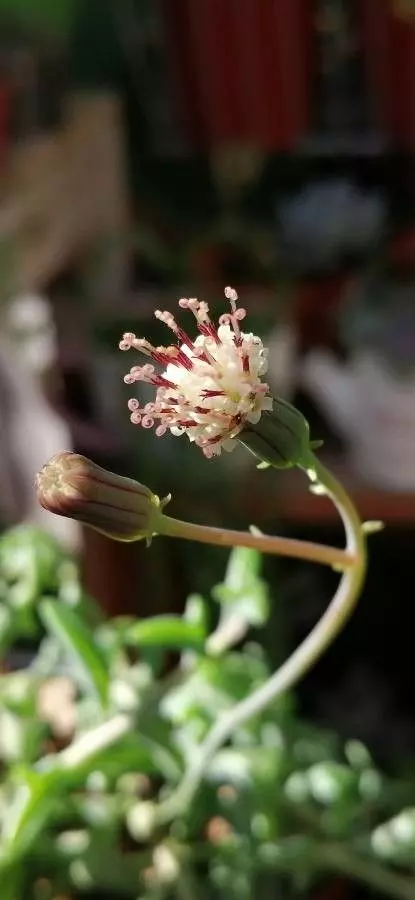Table of Contents
Senecio Peregrinus Care
How To Revive String Of Dolphins
String of Dolphins Indoor
Senecio Peregrinus, also known as String of Dolphins or the Dolphin Plant is a succulent with a characteristic leaf shape that gives it its name. Although it is relatively easy to take care of String of Dolphin, it is necessary to distinguish in time some signs that indicate that something is wrong with your String of Dolphin. Here you will find everything you need to know to identify problems with your Dolphin Plant and How to Revive a String of Dolphins. Learn all about String of Dolphins Plant Care in this article.
What Is Wrong With My String Of Dolphin?
Why Is My String Of Dolphins Shriveling
Why Is My String Of Dolphins Wilting
String Of Dolphins: Wilted And Shriveled Leaves
If the leaves of your String of Dolphins are starting to wilt or look shriveled, likely, your Dolphin Plant is not getting enough water. If you have been watering your plant sparingly and the leaves begin to wilt, there may be an underwatering problem that can be easily remedied. A common mistake is to water the leaves of the plant. Water should enter through the roots. Avoid contact of the leaves with the water, to prevent the leaves from rotting. Water with a pipette, directly to the soil and in moderate quantity.
String of Dolphins Drying Up
If the leaves of your String of Dolphins are starting to wilt or look shriveled, your Dolphin Plant is not getting enough water. String of Dolphins likes deep watering until excess water drips out of the potholes. Before watering again, wait until the soil dries out.

How To Revive String Of Dolphins. Revive The Dolphin Plant
Check to see if the soil is too dry, that will help you confirm that the problem is a lack of water. Check the wetness with your hand. If the soil is dry to 1 inch deep, it is dry enough to receive some water. Water more thoroughly and frequently. During the growing season, during summer or heat waves, or in indoor plants exposed to heat, String of Dolphins Plants need more water. When watering, let the water run out of the holes, and before watering again check that the soil is dry.
How To Water A String Of Dolphins
How Often To Water String Of Dolphins
The best way to water a String of Dolphins properly is to check the soil moisture. Use your hand, moving the soil to a depth of 1 inch. If below 1 inch deep it is moist, don’t water and check the next day.
Leaves Falling Off My String Of Dolphins
The most common reason for leaf drops to the String of Dolphins is watering problems. Too much water can cause the leaves to swell, soften and eventually fall off. When leaves fall off because of overwatering they look wet and limp, and the stem may appear swollen.
To revive the String of Dolphin Plant, pull the plant out of the pot and check that its roots are still healthy. Examine the stem for black/blue spots. If the roots look healthy, replant them in dry, well-drained soil and stop watering for a while. When the stem has black/blue spots it is a sign of rot. If so, cut the stem above the rot and let it dry without substrate for a week. Then you can put it in dry soil and the roots will grow back.
String of Dolphins Yellowing
Why my String of Dolphins is Turning Yellow?
When the leaves of String of Dolphins turn yellow it can be for several reasons: Watering problems, in excess or deficit, or due to a lack of nutrients. The leaves of the String of Dolphins can turn yellow due to either too much or too little watering. Pay attention to other things that could be happening to your plant. If the plant is well watered and the leaves turn yellow, feel soft and swollen, the plant is being overwatered and is rotting. If its leaves turn yellow and look wilted and dry and you know you haven’t watered the succulent for a while, then it is very likely that the plant needs water and is drying out.
String of Dolphins Plant Care
String of Dolphins Plant Care. Follow all the tips we will give you below to care String of Dolphins plant.
Watering String of Dolphins
In this case, you can revive your String of Dolphin by adjusting the watering technique. If you suspect the plant is overwatered, water less frequently and wait for the soil to dry out between waterings. If the plant is underwatered, water it more thoroughly. String of Dolphins likes deep watering until excess water drips out of the potholes. Before watering again, wait until the soil dries out.

String of Dolphins turning yellow – Lack of Nutrients
Soil for String of Dolphins
How to Repot String of Dolphins
String of Dolphins leaves may turn yellow from lack of nutrients. When you buy your String of Dolphins the soil is a commercial mix with the precise composition, compost or fertilizer that will feed your plant for a long time. Eventually, these nutrients are depleted and removed from the soil by constant watering and the nutrients must be added back. Nutrients can be added either by repotting the succulent in a pot with a fresh soil mix or by fertilizing the plant.
Repot the String of Dolphins using a potting mix suitable for well-draining pots or apply succulent fertilizer. Commercial potting soil mixes for cacti and succulents are suitable for String of Dolphins. String of Dolphins does not require a lot of fertilizer. Consider that too much fertilizer is also toxic to the plant and causes root crenation. Therefore, if you apply fertilizer, dilute the amount of fertilizer recommended by the manufacturer. Fertilizing about every two weeks during the growing season should be sufficient.
String of Dolphins Sun
String of Dolphins Growing Upwards
If your String of Dolphins begins to growing upwards, lean toward the light, or elongate toward a window, it is a sure sign that it is not getting enough sunlight. This is a mechanism that String of Dolphins Plant, like other plants, has to survive to a lack of light. The stem and plant stretch toward the direction of the light source. You may notice that the stem stretches and the spaces between the leaves widen. Plant growth tends to weaken in this state. We recommend changing the location of the plant by improving the light exposure. It takes several months to achieve the desired effect, but at least the plant will stop making this extra effort to reach the light. This will keep it healthier. If the Dolphin plant has elongated, direct sun exposure is not recommended, only gradual. Imagine that the plant has sought to adapt to the lack of light with this elongation mechanism. If it then begins to receive drastically too much light, it could also be affected. Make gradual changes.
String of Dolphins Temperature
String of Dolphins Zone
According to the USDA plant hardiness zone map that divides North America into zones with different temperature ranges, the String of Dolphins plant can grow in a temperature range with minimum temperatures of 30 to 35 F (-1.1 to 1.7 °C), related to zone 10a. This does not mean that the correct temperature for growing this plant is in cold weather. This only refers to the minimum temperature that The String of Dolphins Plant can withstand. The room temperature inside your house is a suitable temperature to grow String of Dolphins and take care of the Dolphin Plant.
String of Dolphins Has Other Leaves
Why is String of Dolphins Getting Flat Leaves
The leaves of String of Dolphins adapt to a lack of light by changing their leaves, getting flat leaves to a flattened shape, losing the dolphin effect, as a mechanism to capture more light. Stem elongation and flat leaves on String of Dolphins plants indicate that the plant requires lighter. If a change of location or more exposure to natural light is not possible, we recommend reviving the String of Dolphins by repotting with commercial succulent and cactus soil mix, to avoid nutritional deficits related to lack of light and to help the plant with some common or special artificial light for plants. In the case of using artificial light, give the plant the same day cycle, do not give it night lighting.
Is String of Dolphins Safe for Cats?
String of Dolphins is not safe for cats to eat the plants. String of Dolphins is toxic for cats. Should not be eaten by cats.
Is String of Dolphins Toxic to Cats?
Our readers ask us, “Is String of Dolphins Toxic to Cats?” Yes, String of Dolphins is toxic to cats. The String of Dolphins Plant should not be consumed by cats, dogs, or humans. Dolphin Plant causes toxicity when consumed, causing vomiting, nausea, and/or diarrhea.
Is String of Dolphins Toxic to Dogs?
String of Dolphins is toxic to dogs. The String of Dolphins Plant is poisonous and should not be consumed by cats, dogs, or humans. Dolphin Plant can cause vomiting, nausea, and/or diarrhea.
- INCLUDED IN PURCHASE | (1) String of Dolphins (Senecio Peregrinus) rooted in a large (6 inch) pot.
- WATERING NEEDS | Succulents are very sensitive to overwatering, and damp soil can cause root rot. Allow soil to dry out completely between waterings. Water once every one to two weeks.
- EASY CARE | Known for it's unique leaf shape, String of Dolphin lands itself in the rare and highly coveted category for succulents. This plant prefers plenty of filtered sunlight and protection from frost. It propagates easily from cutting. The leaves look just like little dolphins and when properly cared for this plant can produce beautiful blooms of little white flowers. This is a trailing plant that does nicely both indoors and outdoors.
String Of Dolphins Flower
String Of Dolphins Plant Flowers

Know about How to Propagate String of Dolphins.
Know about String of Dolphins Plant from Seeds.

